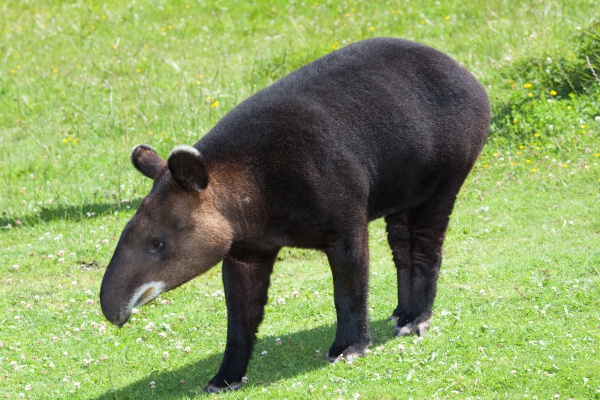Facts About Mountain tapir
The mountain tapir, also known as the Andean tapir or woolly tapir, is the smallest of the four recognized tapir species and is notable for inhabiting regions outside tropical rainforests. This distinct creature is easily recognized by its thick, woolly coat and prominent white lips. Adult mountain tapirs typically measure about 1.8 meters in length and weigh between 136 and 250 kilograms, with females generally being heavier than males. They possess long, flexible snouts, small tails, and distinctive foot structures.
In terms of reproduction, female mountain tapirs have a 30-day estrous cycle and breed once every two years. The gestation period lasts approximately 392-393 days, resulting in the birth of a single calf. Newborn tapirs are born with a brown coat decorated with yellowish-white spots and stripes. As herbivores, mountain tapirs play a crucial role in seed dispersal within their ecosystems.
Mountain tapirs are known for their shy and solitary nature. They communicate using whistles and mark their territories to establish boundaries. These animals are crepuscular, meaning they are most active during dawn and dusk. They forage along well-trodden paths in search of food. Their natural habitat includes the cloud forests and páramo regions of the Andes mountains in Colombia, Ecuador, and Peru, typically at elevations between 2,000 and 4,300 meters.
Unfortunately, the mountain tapir is currently listed as endangered, primarily due to habitat loss, hunting, and poaching. Conservation efforts are crucial and focus on protecting their remaining habitats and maintaining breeding programs in captivity. With an estimated wild population of only around 2,500 individuals, the mountain tapir is the most threatened among tapir species.
Genetic research indicates that mountain tapirs diverged from their closest relative, the Brazilian tapir, around three million years ago. Despite being the least specialized tapir species, they have remained relatively unchanged since the early Miocene. Conservationists are particularly concerned about habitat fragmentation and the potential loss of genetic diversity within the remaining populations.

 Ecuador
Ecuador